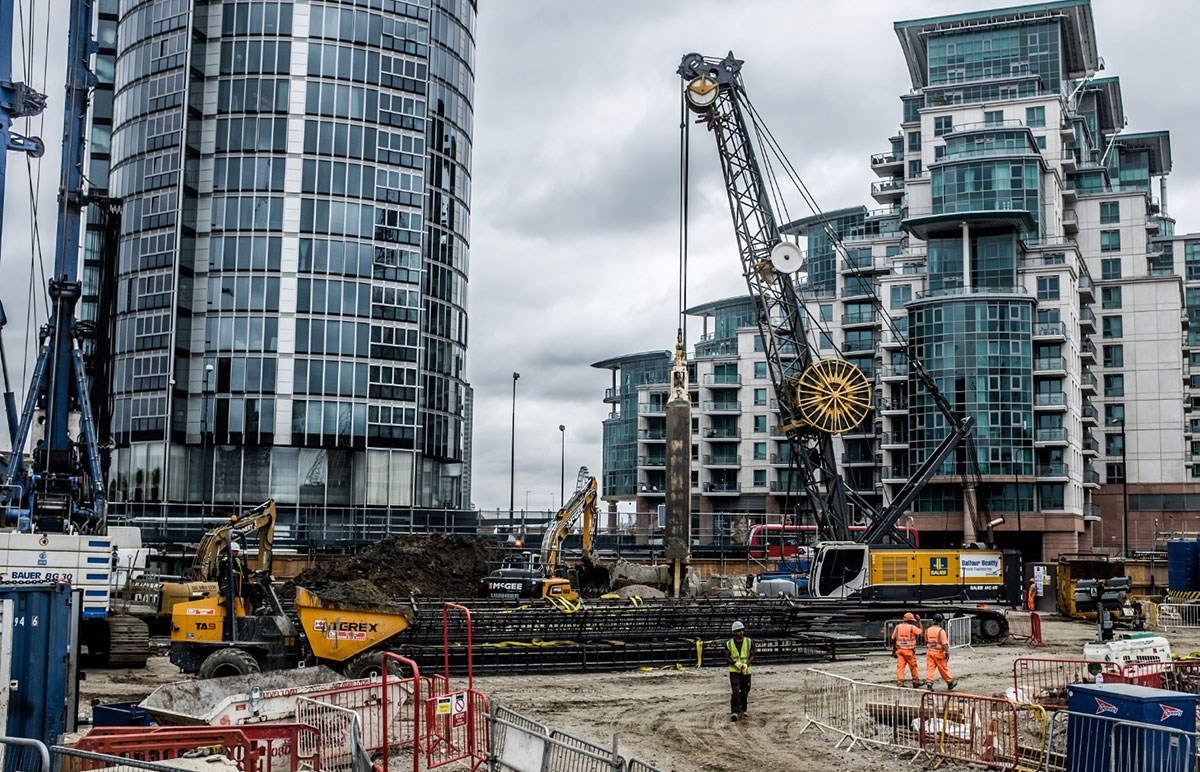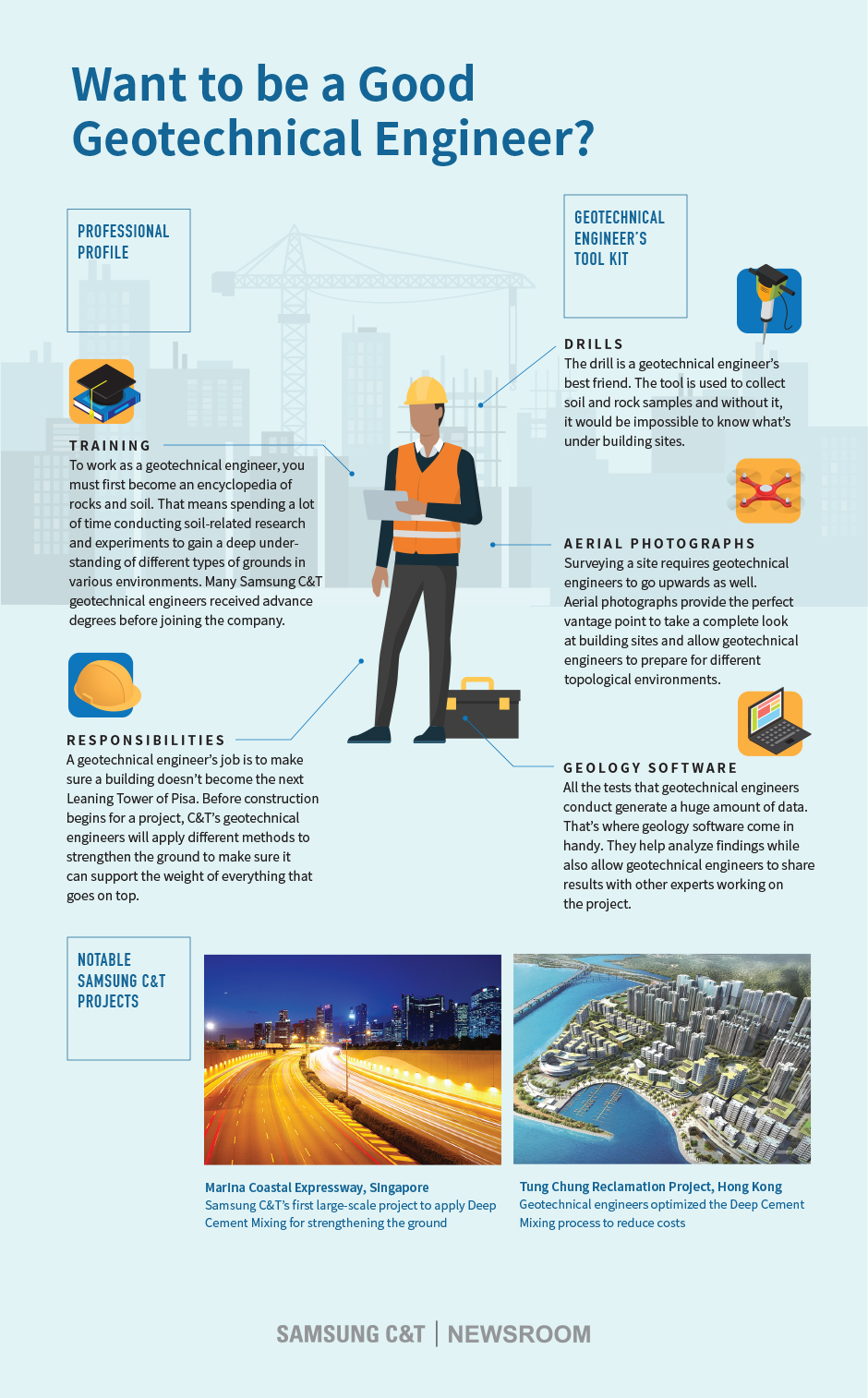The Geotheta Diaries
The Geotheta Diaries
Blog Article
The 8-Minute Rule for Geotheta
Table of ContentsSome Ideas on Geotheta You Should KnowGeotheta Things To Know Before You BuyGeotheta Can Be Fun For EveryoneSome Known Factual Statements About Geotheta
They team up with civil engineers, structural designers, architects, and other experts to integrate geotechnical considerations into the total job design and building and construction process. This calls for effective team effort, coordination, and communication to make sure that the geotechnical elements line up with the task goals and satisfy regulative demands.Mining & Products Engineering: Concepts of drilling, infiltration rates, and factors impacting the option of boring method. Features of explosives, firing systems and blast patterns. Blowing up strategies in surface and underground operations. Unique blowing up techniques at excavation borders. Resonance and noise control. Mechanical and continuous techniques to fragmentation, consisting of longwall shearing and fullface boring.
Integrated analysis of fragmentation and comminution procedures. Supplied by: Mining & Materials Design.
The Only Guide for Geotheta
Bachelor's level programs in civil, geotechnical, geological, and environmental design generally last four years and include general education courses in English, social science, and the humanities, as well as programs in sophisticated mathematics, structural geology, and fluid mineralogy. (https://ianhammond2191.wixsite.com/my-site-2/post/unlocking-the-secrets-of-geotechnical-engineering-with-geotheta)
Geotechnical engineering entails the evaluation of the dirt and rock conditions at a certain site, and their effects for the growth of that site. As most structures rely on the ground for support, it is without shock that a thorough understanding of the ground conditions, and the viability of foundation systems, are important to the long-term security and performance of the structure or structure.
Being experts in the investigation of geological formations and ground behavior, geotechnical designers carry out scientific investigations and screening to understand the effect these geological developments may carry the design and building and construction of building, civil and infrastructure tasks. This know-how is vital for the layout and building of structures, roadways, passages, dams, bridges, and supply of water and sewage systems.
The geotechnical team at Douglas Allies consistently speak with engineers, design designers, programmers, and home builders to make referrals on style and advancement propositions to ensure that the constructed frameworks are appropriately designed for the ground problems. As an example, the layout of footing systems needs to consider the weight of the framework, the ability of the ground to support that weight along with activity tolerances and reliable building.
An Unbiased View of Geotheta
This job is considerably simplified by the use our Douglas Map geospatial system which makes this info conveniently available in an easy to utilize internet browser user interface. A geotechnical designer will route the boring of boreholes and test pits to accumulate soil and other examples, and additionally assess surface attributes and ground exposures to develop a geotechnical model of the subsurface conditions.
Depending on the job type and ground problems experienced, research laboratory testing may to name a few points assess strength, compressibility, reactivity and/or permeability of soil and rock examples. Hereafter information is gathered and looked at, the outcomes are utilized for a geotechnical version of the website, which is commonly offered as sections across the website.

A geotechnical investigation naturally can just examine the ground conditions at the locations drilled or dug deep into. Natural variations in soil and rock problems can occur across a website and in between examination areas. It is as a result excellent technique that the geotechnical engineer be kept throughout building of the job to supply on-site confirmation that the ground conditions experienced are regular with the assumptions and advice offered in the geotechnical examination report.
9 Easy Facts About Geotheta Shown
Geotechnical designers utilize their thorough expertise of dirt and rock to evaluate risk and fix issues on diverse framework projectsGeotechnical design is a specialist branch of civil design which takes a look at the practices of planet products and the application of soil and rock auto mechanics. Tailings Engineer. As a geotechnical engineer, you will certainly examine the physical, mechanical and chemical residential properties of soil and rock in order to make structures, retaining structures and earthworks
Geotechnical design is very closely linked to and overlaps with, both design geology and ground engineering - https://ameblo.jp/geotheta/entry-12862281966.html. It's possible to specialise in geotechnics or benefit a geotechnical business yet be recognized as a design rock hound or a ground designer. As a geotechnical engineer, you'll need to: develop and keep connections with clients and other experts associated with the site, throughout each projectmaintain safety and security requirements on site bear in you can look here mind expense ramifications when you make recommendationsstudy geological maps and aerial photos from a range of sources and from different time periodsexamine construction prepares to see exactly how viable they are based upon your understanding of the siteinvestigate threats or geological threats for the sitesearch for ecologically delicate functions, such as garbage dump start to develop factual and expository ground modelsplan field investigationsdrill and evaluate examples of bedrock, dirt, groundwater and added materials supervise various other experts on sitesolve technological problems as they develop, such as unanticipated structures at drill sitesmonitor conditions throughout and after building and construction to make sure structures are steady in the short and long termadding data collected on website to your initial researchcreating geotechnical calculations, illustrations, and two or three-dimensional computer system models translating the datamaking referrals about the suggested use the website

Report this page